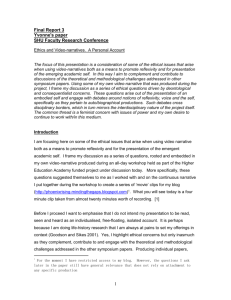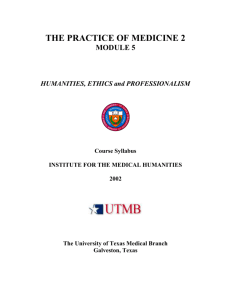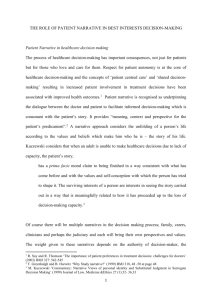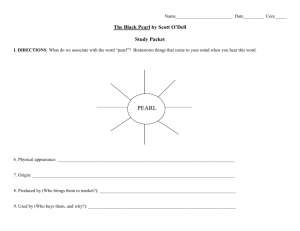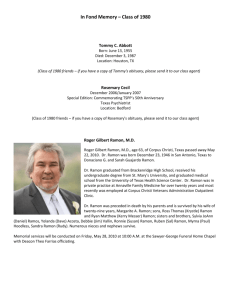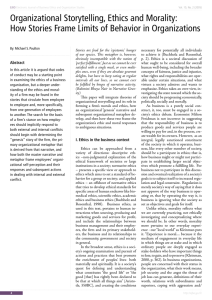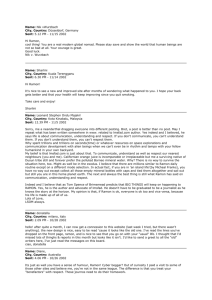A Case for Integrating Medical Humanities into Undergraduate
advertisement
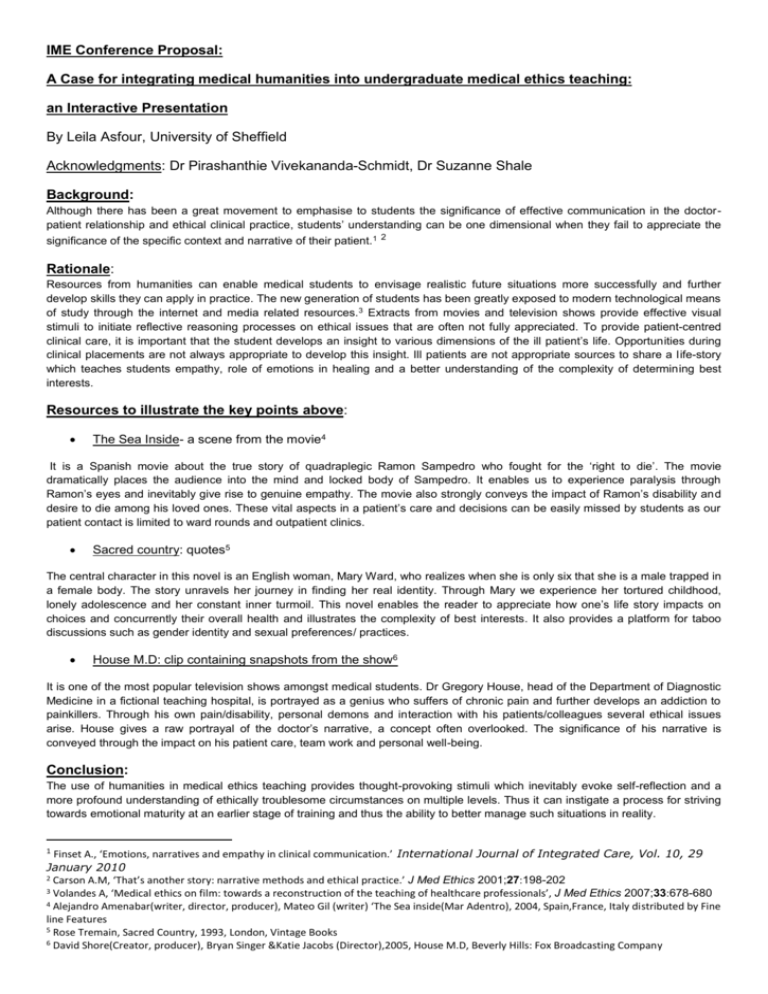
IME Conference Proposal: A Case for integrating medical humanities into undergraduate medical ethics teaching: an Interactive Presentation By Leila Asfour, University of Sheffield Acknowledgments: Dr Pirashanthie Vivekananda-Schmidt, Dr Suzanne Shale Background: Although there has been a great movement to emphasise to students the significance of effective communication in the doctorpatient relationship and ethical clinical practice, students’ understanding can be one dimensional when they fail to appreciate the significance of the specific context and narrative of their patient.1 2 Rationale: Resources from humanities can enable medical students to envisage realistic future situations more successfully and further develop skills they can apply in practice. The new generation of students has been greatly exposed to modern technological means of study through the internet and media related resources.3 Extracts from movies and television shows provide effective visual stimuli to initiate reflective reasoning processes on ethical issues that are often not fully appreciated. To provide patient-centred clinical care, it is important that the student develops an insight to various dimensions of the ill patient’s life. Opportunities during clinical placements are not always appropriate to develop this insight. Ill patients are not appropriate sources to share a life-story which teaches students empathy, role of emotions in healing and a better understanding of the complexity of determining best interests. Resources to illustrate the key points above: The Sea Inside- a scene from the movie4 It is a Spanish movie about the true story of quadraplegic Ramon Sampedro who fought for the ‘right to die’. The movie dramatically places the audience into the mind and locked body of Sampedro. It enables us to experience paralysis through Ramon’s eyes and inevitably give rise to genuine empathy. The movie also strongly conveys the impact of Ramon’s disability and desire to die among his loved ones. These vital aspects in a patient’s care and decisions can be easily missed by students as our patient contact is limited to ward rounds and outpatient clinics. Sacred country: quotes5 The central character in this novel is an English woman, Mary Ward, who realizes when she is only six that she is a male trapped in a female body. The story unravels her journey in finding her real identity. Through Mary we experience her tortured childhood, lonely adolescence and her constant inner turmoil. This novel enables the reader to appreciate how one’s life story impacts on choices and concurrently their overall health and illustrates the complexity of best interests. It also provides a platform for taboo discussions such as gender identity and sexual preferences/ practices. House M.D: clip containing snapshots from the show6 It is one of the most popular television shows amongst medical students. Dr Gregory House, head of the Department of Diagnostic Medicine in a fictional teaching hospital, is portrayed as a genius who suffers of chronic pain and further develops an addiction to painkillers. Through his own pain/disability, personal demons and interaction with his patients/colleagues several ethical issues arise. House gives a raw portrayal of the doctor’s narrative, a concept often overlooked. The significance of his narrative is conveyed through the impact on his patient care, team work and personal well-being. Conclusion: The use of humanities in medical ethics teaching provides thought-provoking stimuli which inevitably evoke self-reflection and a more profound understanding of ethically troublesome circumstances on multiple levels. Thus it can instigate a process for striving towards emotional maturity at an earlier stage of training and thus the ability to better manage such situations in reality. Finset A., ‘Emotions, narratives and empathy in clinical communication.’ International Journal of Integrated Care, Vol. 10, 29 January 2010 2 Carson A.M, ‘That’s another story: narrative methods and ethical practice.’ J Med Ethics 2001;27:198-202 3 Volandes A, ‘Medical ethics on film: towards a reconstruction of the teaching of healthcare professionals’, J Med Ethics 2007;33:678-680 4 Alejandro Amenabar(writer, director, producer), Mateo Gil (writer) ‘The Sea inside(Mar Adentro), 2004, Spain,France, Italy distributed by Fine line Features 5 Rose Tremain, Sacred Country, 1993, London, Vintage Books 6 David Shore(Creator, producer), Bryan Singer &Katie Jacobs (Director),2005, House M.D, Beverly Hills: Fox Broadcasting Company 1









